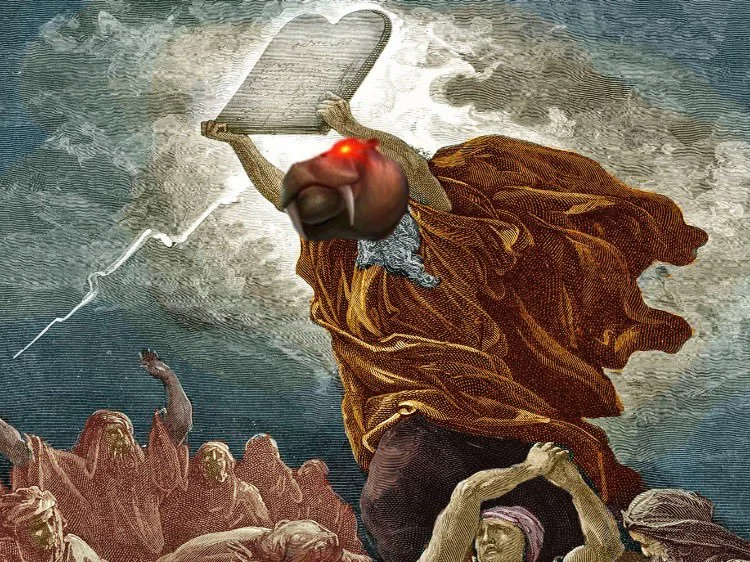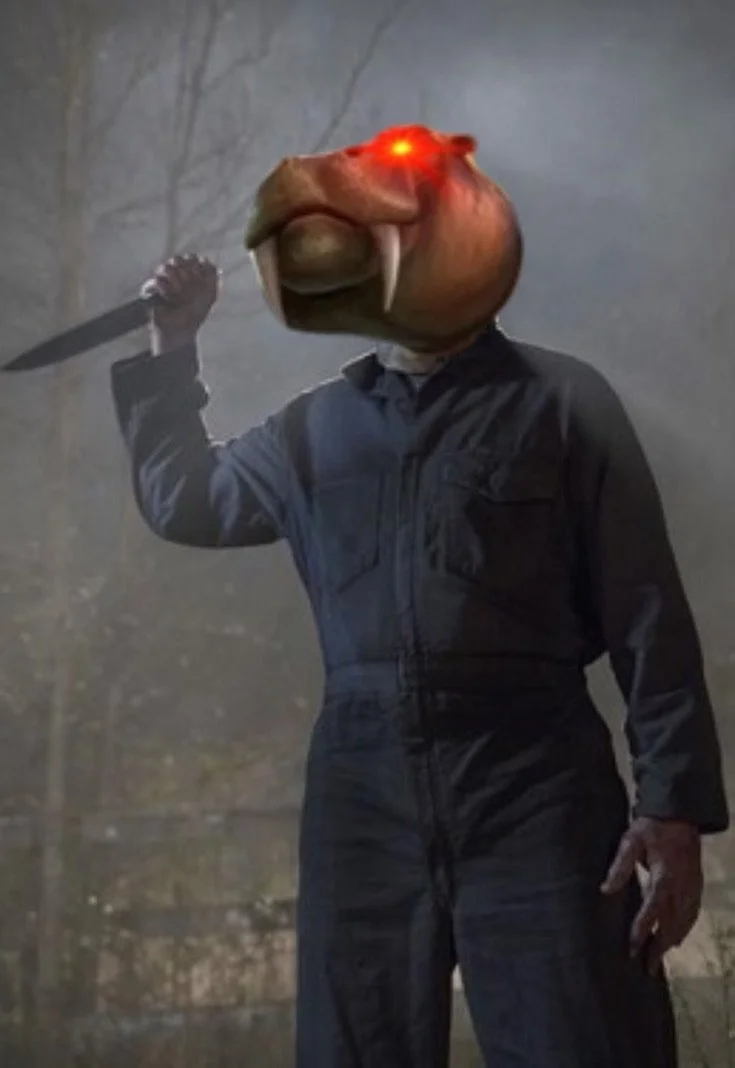Behold, a Casual Deck: Keruga, the Macrosage
Commander is a format that features a lot of powerful staples. The signature card of the format is Sol Ring, and other powerful staples have helped shaped the format during its entire history. The recently banned Mana Crypt is another example. We often hear about the pressure to optimize or to not optimize in this format. Playing Keruga, the Macrosage as a companion means that you have to blow most of your format staples the @#$% up and never look back, because Cool Guys Don’t Look at Explosions.
This is my casual EDH deck. My commanders are Kodama of the East Tree and Blue Kodama of the East Tree—I mean Sakashima of a Thousand Faces. I play these commanders because they let me do exactly what I like to do in Commander: doing the same game actions over and over and over again. This deck lets me play with a ton of lands and keep looking them for value until I combo out using the abilities of my commanders, Keruga, Clones, and other enablers. More on that in a minute.
The point is, this deck gives me an outlet to shoot myself in the foot and then try to run as fast as possible. I’m playing with a disadvantage, but it doesn’t really matter. You need to stop me if you can because I will get out of control. That’s just who I am. Also, this deck really does sort of abuse the social contract because there isn’t really much that stops lands and people rarely have good ways to remove them or interact with them.
Fortunately, someone I know keeps me in check.
I like to compare this deck to playing a Simic version of Godo, Bandit Warlord. When the Godo player hits 11 mana, they can cast Godo and tutor up Helm of the Host and equip it to Godo to win the game if they’re unimpeded during the combo. As long as I put Keruga into my hand before I hit 10 mana, I can cast Kodama, then cast Sakashima and have him enter as a copy of Kodama, which then lets me put Keruga onto the battlefield and start digging. The game is over at this point if nobody stops me.
I start digging for cards such as Spark Double and Sakashima the Impostor to make more copies of Keruga and keep drawing cards and putting more Clones onto the battlefield to make even more copies of Keruga. This deck is extremely consistent even though I can’t play anything under 3 mana value. You have to stop me before we get to this point in order for you to have any realistic chance of winning.
Oh, you can also use these Clones to copy other people’s commanders. That’s one of the best things about them. Sometimes you can keep a hand just because you know you’re going to copy a broken value commander. Not all of your opponents are going to be giga-chads that refuse to play free value in the command zone. Shout out MonoWhiteBorder.
Okay, so you’re probably wondering how I win the game. I actually hate cards such as Laboratory Maniac or Jace, Wielder of Mysteries in this deck because they’re completely useless in my opening hand. I need to play more lands and enablers to improve the consistency of my combo. I only play Commander using the official mulligan rules, so I don’t have unlimited chances to get a good hand. Even though Commander is a casual format, I always follow the rules because that’s how I approach every game that I play.
No, my win conditions are things such as looping Sunscorched Desert an infinite amount of times or using Beast Within to blow up all of my opponents permanents and then bounce all of the Beast Tokens back to their hand. I don’t have time to play cards like Laboratory Maniac because I can’t afford to reduce the consistency of my deck. I’m currently on 41 lands and I might actually need to add more. I might even cut Rhystic Study in order to get another land slot.
Playing cards such as Sink into Stupor and Boseiju, Who Endures lets me skirt the mana value restrictions and keep my land count high. I’m able to play these as lands early and then use a bounce land to get them back when I need interaction. This is extremely important because it keeps me very consistent and lets me play more interaction and removal even though I can’t play the low mana value staples because of my companion.
There’s a whole suite of these cards. Otawara, the Soaring City lets me bounce problems from my opponents, but it also helps me if I need to bounce something in order to get it back for a loop. Sea Gate Restoration is basically a free include as a land that I can bolt myself with, but being able to pay seven mana to draw a ton of cards has helped me win more than a few times.
People always ask me why I play Timeless Witness instead of Eternal Witness. The answer is that I need to be able to use Kodama’s trigger to put things with mana value 4 onto the battlefield. This is important for Clones, but it’s also important for cards like Venser, Shaper Savant that can become part of loops for me. This deck forces you to really pay attention to mana values if you want to successfully play out your loops and win.
One more thing: Shifting Woodland is a card that lets me make a copy of Keruga even if it’s in my graveyard, so I can still clone it to continue the combo if something goes wrong. After all, Keruga is inevitable. Shout out, bestie! This card is sick.
Wait a second. This kind of sounds like cEDH!
This deck is hyper-tuned for a specific purpose, but the restriction from the companion and the ridiculous gameplan means that this deck would get slaughtered in an actual cEDH game. I’ve had people come at me and claim that I said that a casual deck is a cEDH deck or even that I’m misleading people by playing a cEDH deck in a casual game. I’ve never said that this was a cEDH deck. Don’t play it in cEDH.
I’ve spent so much time in the online sphere being met with almost every extreme about cEDH and casual EDH and I’ve taken so much heat about this deck and being told that I’m misleading people. It’s not my fault that people don’t read and decided to play this deck on a CEDH stream or that some people think that it’s a cardinal sin to actually try to win the game in Commander.
Fortunately, we have the Bracket system now. Now my deck gets to be somewhere between a Bracket 3 and a Bracket 4, also known as a 7. I’ve shared my thoughts about this previously. I thought that this deck was a Bracket 3, but the system is always changing, which might actually make it hard to keep track of where to play your deck. But that’s a whole other article!
This deck is very focused on doing one thing very well. I’ve beaten most of the variance out of this deck and made it incredibly consistent by focusing on just putting things onto the battlefield and getting value out of them. It’s just Simic value with a bunch of ways to get around the mana value restrictions by not paying mana for spells such as Flare of Cultivation or Fierce Guardianship.
Just because the mana value is 3 or greater, that doesn’t mean that I’m going to pay mana for it. If you have seven cards in your hand, Foil is practically Force of Will. I can also still play Force of Will because its mana value is 5, which means that I’m going to play it. I’m very up-front when I do Rule 0 that I’m going to go for it and that I play very powerful cards even though I’m so restricted on what I can include in my deck.
Now that we understand what I’m trying to do, I wanted to talk about some new cards. Icetill Explorer takes the best part of Azusa, Lost but Seeking and combines it with Crucible of Worlds. My biggest problem with Azusa was how quickly you run out of lands to play, but that’s never a problem when you have fetchlands to keep playing out of your graveyard. I’m also looking at Horizon Explorer because he not only lets lands enter untapped, but he also essentially lets you cast Nature’s Lore over and over again.
Warp is an interesting mechanic because it also gets around the mana restrictions of Keruga, which means that creatures like Starwinder or Starfield Vocalist can come down early to give you access to their effects for less mana and than you cast cast them again later. I’m not going to be playing these cards, but I wanted to give some examples of commanders that might benefit from them in a Keruga build.
Imoti, Celebrant of Bounty is a commander that cares about casting spells with a certain mana value, which means that spending less mana to cascade is always going to be helpful, plus you’ll usually have plenty of creatures to turn sideways if you want to draw cards. Chulane, Teller of Tales loves creatures with ETBs and loves warp as a mechanic to get multiple casts out of the same creature.
Some people don’t need help in order to enjoy casual Commander. Unfortunately, I’m not built like that. Keruga helped me find a way to play casual EDH how I like while keeping myself within certain restrictions. Now if you’ll excuse me, I have 15 Kodama triggers to resolve. Until next time. ✌️
P.S. HOLY AMONG US REFERENCE! You can tell that they work pretty far ahead when the memes almost become like retro callbacks. It almost feels intentional.
Articles like these are made possible and kept ad-free due to the support of all of our Patreon, Twitch, and Discord subscribers. Come check us out on Discord to chat about all things Commander and play curated games with people from all over the world! We’re now also on Bluesky for all of our latest news and updates! Give us a follow!
“This article is unofficial Fan Content permitted under the Fan Content Policy. Not approved/endorsed by Wizards.
Portions of the materials used are property of Wizards of the Coast. ©Wizards of the Coast LLC.”






























